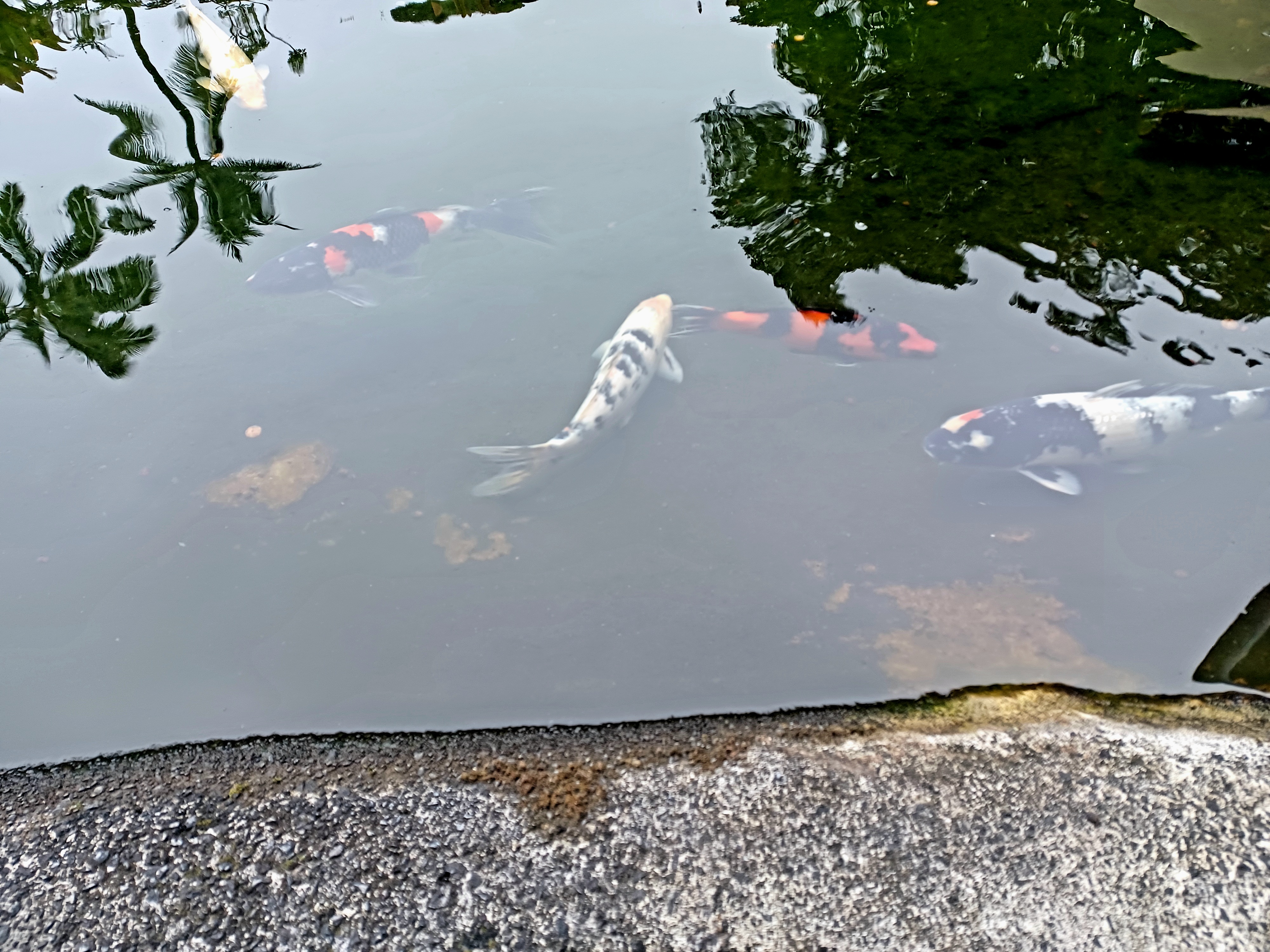|
Eccleston Quarry
Eccleston Quarry is a mile south of Eccleston, Lancashire. It is also called Eccleston Delph and Eccy Delph (pronounced "ekky"). It is an old stone quarry that flooded. It is a popular site for scuba diving. Visibility is generally very poor and ropes have been strung between each underwater 'feature' to aid navigation, since traditional compass methods are all but impossible in the murky waters. Much work has been undertaken to improve visibility in the recent past, and by 2010 the visibility was much improved. History Formerly a Mr. Hurst ran it as a stone quarry and employed 12 men. From it came stone for Blackpool Promenade, and thin split stone used as slates for roofing in the area. It was formerly also called Hurst House Delph and Marsden's Quarry. A local resident said that "during World War II a Ministry paid a local man to run at intervals a pump to keep the quarry empty while its owner and staff were away. After the war due to official reorganization they stopped ... [...More Info...] [...Related Items...] OR: [Wikipedia] [Google] [Baidu] |
Eccleston, Lancashire
Eccleston is a village and civil parish of the Borough of Chorley in Lancashire, England. It is beside the River Yarrow, and was formerly an agricultural and later a weaving settlement. History Its name came from the Celtic word ''"eglēs"'' meaning a church, and the Old English word ''"tūn"'' meaning a farmstead or settlement, i.e. a settlement by a Romano-British church. Evidence of the settlement dates back hundreds of years; St. Mary's Church dates back to the 14th century AD. The village was mentioned in the Domesday Book of 1086, the book ordered by William the Conqueror, to detail all settlements and farms in England for the purpose of tax collection. Ingrave Farm, located on the northern side of the River Yarrow, is built on a moated site of an earlier building thought to date from the medieval period. The partly waterlogged moat about is wide and deep in places. About to the west is a smaller site about square, the moat of which has since been infilled. It was ... [...More Info...] [...Related Items...] OR: [Wikipedia] [Google] [Baidu] |
Dive Center
A dive center is the base location where recreational divers usually learn scuba diving or make guided dive trips at new locations. Many dive centers operate under the guidelines of ISO 24803, in which case the facilities must meet the ISO minimum standard for a service provider for recreational diving. Shop Divers commonly refer to dive centers as dive shops. It is normally a shop selling diving equipment equipped with a diving air compressor to fill the cylinders. The dive center usually offers the facilities to repair and maintain scuba gear. Diver training and guided dives Professional recreational diving instructors are often associated with, or employed by, a dive center. The center may be located near a swimming pool and open water, where training and guided dives can be conducted. Some operate boats or road transport and offer guided dives at recreational dive sites in the vicinity. Classrooms are often available for diver training which may include training acco ... [...More Info...] [...Related Items...] OR: [Wikipedia] [Google] [Baidu] |
Diving Quarries In The United Kingdom
Diving most often refers to: * Diving (sport), the sport of jumping into deep water * Underwater diving, human activity underwater for recreational or occupational purposes Diving or Dive may also refer to: Sports * Dive (American football), a type of play in American football * Diving (association football), a simulation of being fouled * Diving (ice hockey), embellishing an infraction in an attempt to draw a penalty * Sport diving (sport), competitive scuba diving using recreational techniques in a swimming pool * Taking a dive, or match fixing, intentionally losing a match, especially in boxing Film and television Film * ''Dive'' (film), a 1929 German silent film * ''The Dive'' (1990 film), a Norwegian action thriller * ''Dive!'' (film), a 2010 documentary film by Jeremy Sefert * ''Dive'', a 2014 New Zealand short film written and directed by Matthew J. Saville * ''The Dive'' (2018 film), an Israeli film TV * ''Dive'' (TV series), a 2010 British drama * "The Dive" ... [...More Info...] [...Related Items...] OR: [Wikipedia] [Google] [Baidu] |
Coronation Street
''Coronation Street'' is an English soap opera created by Granada Television and shown on ITV since 9 December 1960. The programme centres around a cobbled, terraced street in Weatherfield, a fictional town based on inner-city Salford. Originally broadcast twice weekly, the series began airing six times a week in 2017. The programme was conceived by scriptwriter Tony Warren. Warren's initial proposal was rejected by the station's founder Sidney Bernstein, but he was persuaded by producer Harry Elton to produce the programme for 13 pilot episodes, and the show has since become a significant part of English culture. ''Coronation Street'' is made by ITV Granada at MediaCityUK and shown in all ITV regions, as well as internationally. In 2010, upon its 50th anniversary, the series was recognised by Guinness World Records, as the world's longest-running television soap opera. Initially influenced by the conventions of kitchen sink realism, ''Coronation Street'' is noted for its ... [...More Info...] [...Related Items...] OR: [Wikipedia] [Google] [Baidu] |
Angling
Angling is a fishing technique that uses a fish hook or "angle" (from Old English ''angol'') attached to a fishing line to tether individual fish in the mouth. The fishing line is usually manipulated via a fishing rod, although rodless techniques such as handlining and longlining also exist. Modern angling rods are usually fitted with a reel that functions as a cranking device for storing, retrieving and releasing out the line, although Tenkara fishing and cane pole fishing are two rod-angling methods that do not use any reel. The hook itself can be additionally weighted with a dense tackle called a sinker, and is typically dressed with an appetizing bait to attract the fish and enticing it into swallowing the hook, but sometimes an inedible fake bait with multiple attached hooks (known as a lure) is used instead of a single hook with edible bait. A bite indicator, such as a float or a quiver tip, is often used to relay underwater status of the hook to the surface. When ... [...More Info...] [...Related Items...] OR: [Wikipedia] [Google] [Baidu] |
Koi Carp
or more specifically , are colored varieties of the Amur carp (''Cyprinus rubrofuscus'') that are kept for decorative purposes in outdoor koi ponds or water gardens. Koi is an informal name for the colored variants of ''C. rubrofuscus'' kept for ornamental purposes. There are many varieties of ornamental koi, originating from breeding that began in Niigata, Japan in the early 19th century.Japanese Ornamental Koi Carp: Origin, Variation and Genetics May 2015 /ref> Several varieties are recognized by the Japanese, distinguished by c ... [...More Info...] [...Related Items...] OR: [Wikipedia] [Google] [Baidu] |
Buoy
A buoy () is a floating device that can have many purposes. It can be anchored (stationary) or allowed to drift with ocean currents. Types Navigational buoys * Race course marker buoys are used for buoy racing, the most prevalent form of yacht racing and power boat racing. They delimit the course and must be passed to a specified side. They are also used in underwater orienteering competitions. * Emergency wreck buoys provide a clear and unambiguous means of temporarily marking new wrecks, typically for the first 24–72 hours. They are coloured in an equal number of blue and yellow vertical stripes and fitted with an alternating blue and yellow flashing light. They were implemented following collisions in the Dover Strait in 2002 when vessels struck the new wreck of the . * Ice marking buoys mark holes in frozen lakes and rivers so snowmobiles do not drive over the holes. * Large Navigational Buoys (LNB, or Lanby buoys) are automatic buoys over 10 m high equipped with ... [...More Info...] [...Related Items...] OR: [Wikipedia] [Google] [Baidu] |
Light Tank
A light tank is a tank variant initially designed for rapid movements in and out of combat, to outmaneuver heavier tanks. It is smaller in size with thinner armor and a less powerful main gun, tailored for better tactical mobility and ease of transport and logistics. They are primarily employed in the screening, armored reconnaissance, skirmishing, artillery observation, and supplementing landing operations in a fire support role of expeditionary forces where larger, heavier tanks are unavailable or have difficulties operating safely or efficiently. The fast light tank was a major feature of the pre-World War II army buildup, where it was expected they would be used to exploit breakthroughs in enemy lines created by slower, heavier tanks, with the goal of disrupting communications and supply lines. Numerous small tank designs and "tankettes" were developed during this period and known under a variety of names, including the " combat car". Early light tank designs were gene ... [...More Info...] [...Related Items...] OR: [Wikipedia] [Google] [Baidu] |
Armoured Personnel Carrier
An armoured personnel carrier (APC) is a broad type of armoured military vehicle designed to transport personnel and equipment in combat zones. Since World War I, APCs have become a very common piece of military equipment around the world. According to the definition in the Treaty on Conventional Armed Forces in Europe, an APC is "an armoured combat vehicle which is designed and equipped to transport a combat infantry squad and which, as a rule, is armed with an integral or organic weapon of less than 20 millimetres calibre." Compared to infantry fighting vehicles (IFVs), which are also used to carry infantry into battle, APCs have less armament and are not designed to provide direct fire support in battle. Infantry units which travel in APCs are known as mechanized infantry. Some militaries also make a distinction between infantry units which use APCs and infantry units which use IFVs, with the latter being known as armoured infantry in such militaries. History The genesis o ... [...More Info...] [...Related Items...] OR: [Wikipedia] [Google] [Baidu] |
Jet Provost
The BAC Jet Provost is a British jet trainer aircraft that was in use with the Royal Air Force (RAF) from 1955 to 1993. It was originally developed by Hunting Percival from the earlier piston engine-powered Percival Provost basic trainer, and later produced by the British Aircraft Corporation (BAC). In addition to the multiple RAF orders, the Jet Provost, sometimes with light armament, was exported to many air forces worldwide. The design was also further developed into a more heavily armed ground attack variant under the name BAC Strikemaster. Development Origins In early 1951, Hunting Percival began work on the design studies that would ultimately lead to the Jet Provost. At the time, the company was in the process of establishing mass production for the earlier piston-engined Percival Provost basic trainer, but had anticipated that demand for a jet-powered trainer aircraft would be on the horizon. The design team aimed to produce an aircraft capable of equalling the han ... [...More Info...] [...Related Items...] OR: [Wikipedia] [Google] [Baidu] |
New Red Sandstone
The New Red Sandstone, chiefly in British geology, is composed of beds of red sandstone and associated rocks laid down throughout the Permian (300 million years ago) to the end of the Triassic (about 200 million years ago), that underlie the Jurassic-Triassic age Penarth Group. The name distinguishes it from the Old Red Sandstone which is largely Devonian in age, and with which it was originally confused due to their similar composition. Its upper layers consist of mudstones, but most of the formation consists of reddish to yellowish sandstones, interbedded with rare evaporite minerals such as halite and gypsum. These indicate deposition within a hot and arid palaeo-environment, such as a desert or sabkha.Benton MJ and Walker AD. 1985. Palaeoecology, taphonomy and dating of Permo-Triassic reptiles from Elgin, North-East Scotland. Palaeontology 28:207–234. Geographical distribution The New Red Sandstone was originally identified in Scotland, at quarries in Elgin. ... [...More Info...] [...Related Items...] OR: [Wikipedia] [Google] [Baidu] |







.jpg)